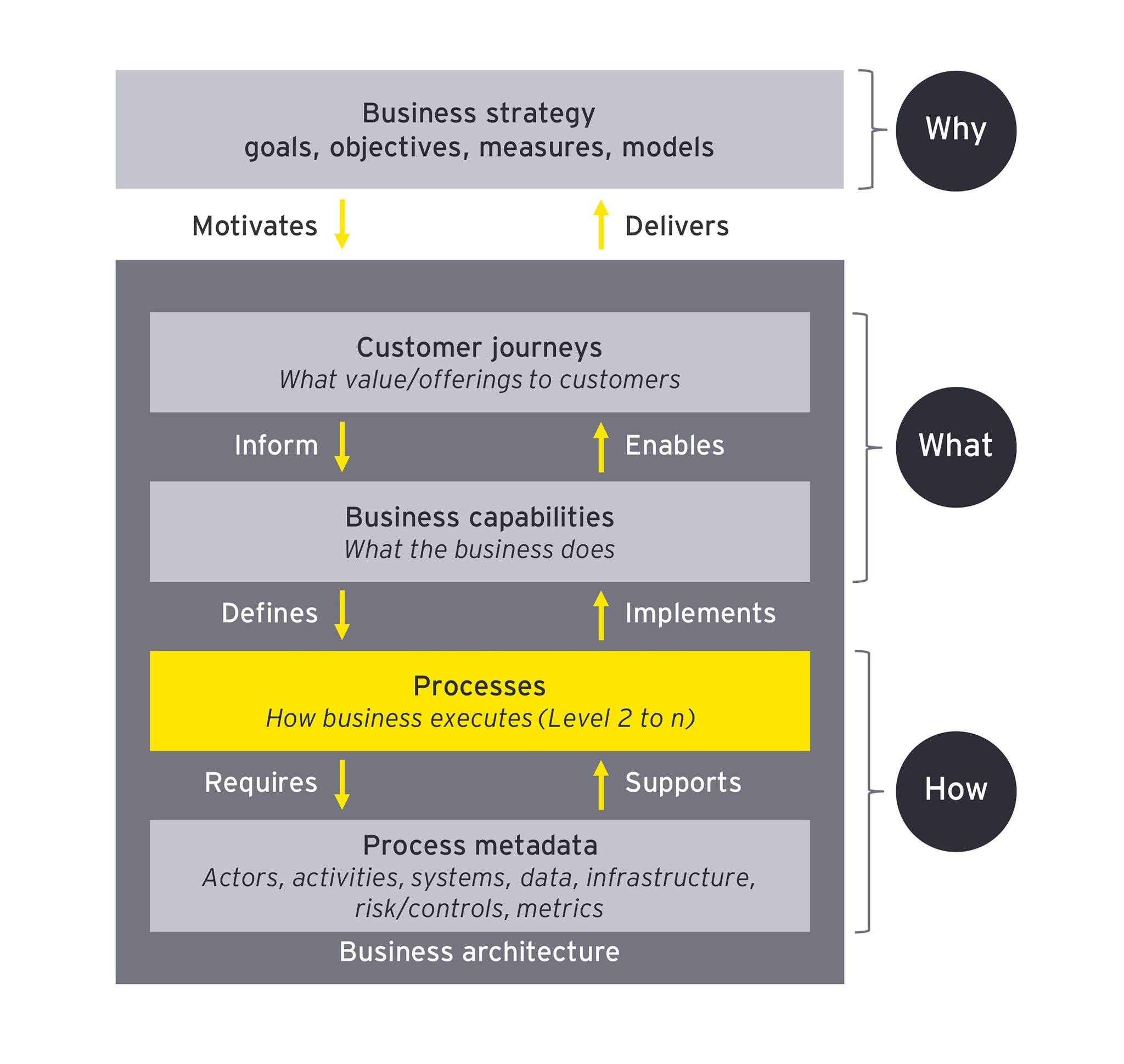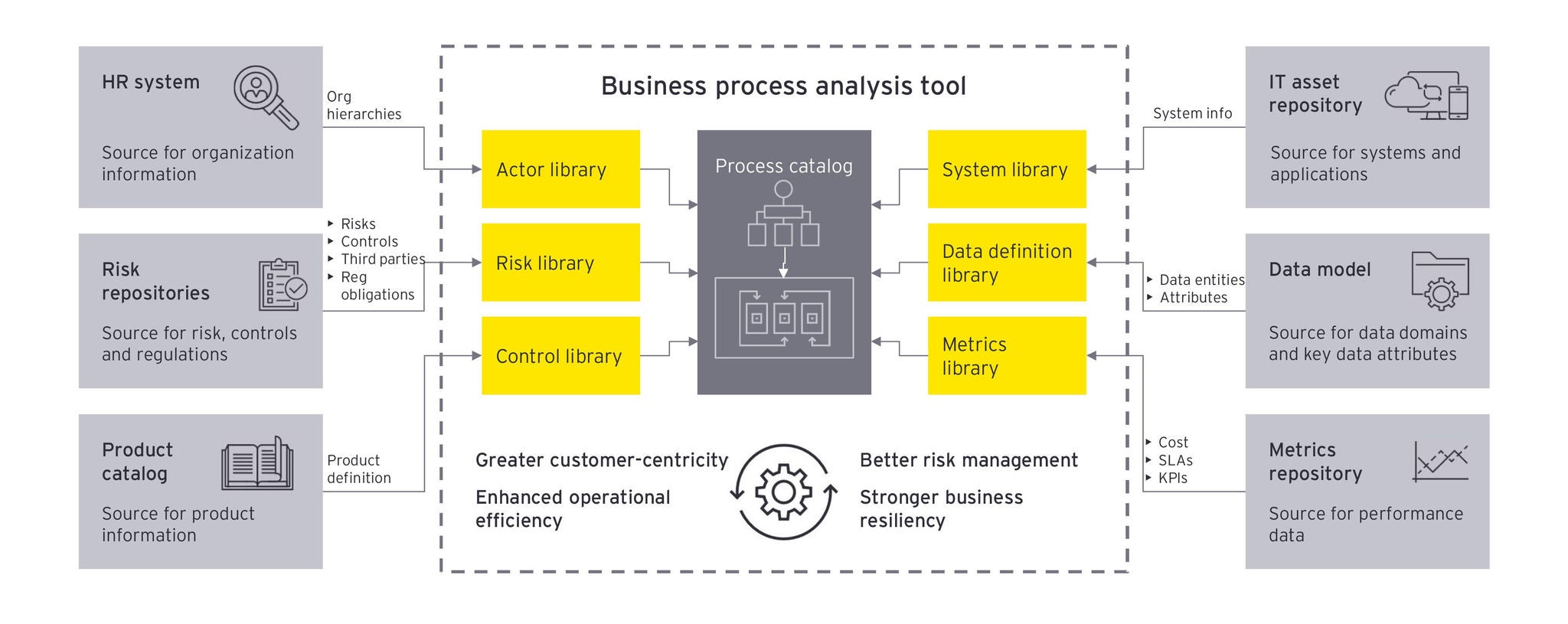Achieving operational excellence has never been more important for financial institutions (FIs) facing disruption from every corner. Digital transformation, an evolving regulatory agenda, competition from non-traditional players and the impacts of COVID-19 all pose enormous challenges for established institutions trying to meet rapidly evolving customer needs. Nearly 70% of boards of directors have accelerated digital transformation in the wake of the pandemic, according to a Gartner survey.¹ FIs looking to compete successfully may need to pursue both rapid growth and aggressive cost reductions.
But complex, years-long transformation initiatives often prove costly in terms of dollars, frustrated stakeholders, high regulatory penalties and lost ground to competitors. Leaders hoping to achieve change quickly often underestimate what’s required and fail to deliver on their intended vision. All too often, change is driven by transformation practitioners operating from a siloed perspective, resulting in a lack of effective collaboration.
Increasingly, we are seeing that the path to operational excellence in financial services benefits from a single view of the business through process. Digitizing and reengineering end-to-end processes across business lines is a highly effective way to drive operational capabilities and goals. This process-centric framework brings disparate operational information together in an innovative way and allows FIs to transform how they run their business.
Delivering on a vision of operational excellence
A successful operational excellence initiative set an ambitious vision with four key goals:
- Greater customer-centricity requires developing highly customized new products and services to specific client segments and designing processes around customer experiences to enhance interactions and value.
- Enhanced operational efficiency enables businesses to reduce costs as they leverage new technologies and workflows to take complexity out of their operations and obtain greater value from their people and investments.
- Better risk management focuses on creating a holistic understanding of regulatory, operational, cybersecurity and other risks, while assessing the effectiveness and costs of controls.
- Stronger business resiliency demands a comprehensive understanding what is needed to support critical business processes during disruptive events such as the COVID-19 pandemic.
A process-centric framework can help FIs achieve these goals by providing a common language that the business understands, and other stakeholders can align to. It achieves this by documenting operations end-to-end at a level that clearly shows the impact of any change. Without this structured framework, a global institution with hundreds of processes spanning business lines and risk models will likely struggle to balance competing priorities and coordinate improvement across a diverse set of stakeholders. An initiative aimed at improving operations will be enhanced only for the function driving it, which means it may be less effective for other aspects of the business.
Placing process at the center of transformation efforts allows a company to connect end-to-end processes throughout and even beyond the enterprise, providing greater visibility into interdependencies and the impact of changes. This approach saves both time and money in a transformation initiative as it reduces the need for an exhaustive current state analysis every time a new problem is addressed.
This framework drills down from a high to a low level of detail, making operations traceable and transparent. Both internal and external stakeholders are clearly defined, giving them more control over changes and increasing the odds that leadership’s vision for operational excellence will be reached.
Process becomes the anchor point for operational information, creating a holistic model for improvement and innovation. This framework draws upon a deep understanding of each of the following:
- Customer journeys capture the end-to-end touchpoints for a product or experience. Since most interactions, such as a loan request, involve many processes, it may be critical to document them all so that any issues or opportunities can be traced and addressed.
- Business capabilities explain what an organization does in a comprehensively exhaustive model in which each capability is mutually exclusive of the other. The goal is to decompose an organization’s unique capabilities to arrive at the full inventory of processes that it executes.
- Business processes show how an organization delivers products and services to customers and employees. This includes desired outcomes, end users and interdependencies.
- Process metadata describes an organization’s operating environment using a variety of data systems. Metadata associated with all relevant aspects of a process (resources, controls, systems, etc.) allows operations to be viewed from a single business lens.






